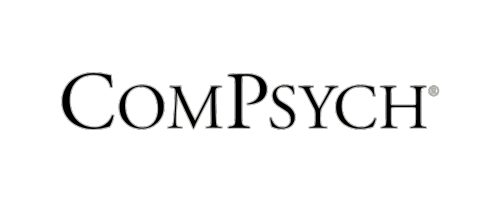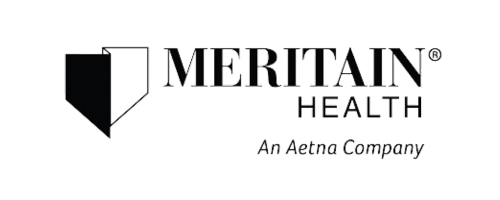In the modern era of rapid living, stress, and anxiety have emerged as widespread issues impacting millions globally. Traditional treatments often involve medication or therapy, but there’s a growing interest in alternative approaches like biofeedback therapy.
This innovative technique empowers individuals to control their physiological responses, reducing stress levels and improving well-being.
But what exactly is biofeedback therapy, and how can training in this field offer relief? Let’s delve deeper into the fascinating world of biofeedback therapy training.
Understanding Biofeedback Therapy:
Biofeedback therapy is a safe and natural way to help you learn more about your body and how it works. Imagine having a tool that shows you what’s happening inside you in real time! That’s what biofeedback does.
Here’s how it works:
- Sensors are attached to your body like tiny stickers.
- These sensors pick up signals from your body, like your heart rate or muscle tension.
- This information is then shown on a screen or through sounds.
By seeing or hearing these signals, you can learn how your body reacts to certain situations. The therapist then guides you through relaxation techniques, and you can see how these techniques actually affect your body’s signals.
Over time, with practice, you’ll learn how to control these signals independently. This can help manage stress, pain, and other health concerns, ultimately leading to a better sense of well-being.
Think of biofeedback as a training tool for your body! With it, you learn how to control things that usually happen automatically, just like learning a new skill.
Advantages of Biofeedback Therapy Training:
Biofeedback therapy training presents numerous benefits for patients and healthcare professionals alike. Here’s an exploration of its key advantages:
For Patients:
- Non-Invasive and Drug-Free: Biofeedback offers a non-invasive and medication-free avenue for managing health issues, appealing to patients wary of pharmaceutical interventions or seeking alternative therapies.
- Self-Regulation Skills: Patients gain the ability to regulate their physiological responses through biofeedback, empowering them to manage stress, chronic pain, and other conditions effectively.
- Heightened Awareness: Biofeedback enhances patients’ awareness of subtle physiological changes, enabling them to recognize triggers early and proactively address potential issues.
- Enhanced Treatment Outcomes: Integrating biofeedback with traditional therapies like cognitive behavioral therapy can enhance overall treatment efficacy, leading to improved patient outcomes.
- Improved Quality of Life: By effectively managing symptoms, biofeedback contributes to a higher quality of life for patients, fostering reduced stress, better sleep, and enhanced well-being.
For Healthcare Professionals:
- Effective Treatment Tool: Biofeedback equips healthcare professionals with a versatile tool to address diverse patient concerns, offering a holistic approach to healthcare.
- Objective Data: The quantifiable data provided by biofeedback aids healthcare professionals in monitoring progress, assessing treatment effectiveness, and tailoring individualized treatment plans.
- Enhanced Patient Engagement: Biofeedback promotes active patient participation in therapy, fostering greater engagement and increasing the likelihood of positive outcomes.
- Expanded Skillset: Incorporating biofeedback into practice allows healthcare professionals to broaden their skill set, providing patients with a wider range of treatment options and enhancing overall clinical expertise.
- Improved Patient Satisfaction: With its potential for effective symptom management and enhanced quality of life, biofeedback contributes to higher levels of patient satisfaction with their healthcare experience.
Biofeedback therapy training offers a valuable and empowering approach to healthcare for both patients and practitioners. It delivers safe, effective, and personalized solutions for managing various health concerns, ultimately promoting well-being and improving treatment outcomes.
What is the key to success in biofeedback training?
The key to success in biofeedback training lies in several factors:
- Consistency: Regular practice is crucial for biofeedback training to be effective. Consistently engaging in sessions allows you to learn how to control physiological responses more effectively over time.
- Setting Clear Goals: Establish specific, measurable goals for your biofeedback training. Whether you’re aiming to reduce stress, improve relaxation, manage pain, or enhance performance, having clear objectives helps guide your training and measure progress.
- Effective Feedback: Biofeedback devices provide real-time information about physiological processes such as heart rate, muscle tension, or skin conductivity. Learning to interpret and utilize this feedback effectively is essential. Understanding how your body responds to various techniques allows you to adjust your strategies for better results.
- Relaxation Techniques: Biofeedback often involves relaxation exercises such as deep breathing, progressive muscle relaxation, or mindfulness meditation. Learning and practicing these techniques alongside biofeedback training can help you achieve better control over your physiological responses.
- Patience and Persistence: Biofeedback training may take time to yield noticeable results. Patience and persistence are key as you work through the learning process and refine your skills. Don’t get discouraged if progress seems slow initially; improvements often come with continued practice.
- Professional Guidance: While some biofeedback techniques can be self-taught, seeking guidance from a trained biofeedback therapist or healthcare professional can enhance your training experience. They can provide personalized instruction, tailor techniques to your specific needs, and offer support and encouragement throughout the process.
- Integration into Daily Life: Incorporating biofeedback techniques into your daily routine can help reinforce learning and maintain progress. Practicing outside formal biofeedback sessions allows you to generalize skills to real-life situations where stress or physiological arousal may occur.
By focusing on these key elements and maintaining dedication to your training, you can maximize the effectiveness of biofeedback techniques and achieve your desired outcomes.
How do we use biofeedback to train people to control certain physiological functions?
Biofeedback uses a three-pronged approach to train people to control certain physiological functions:
- Real-Time Monitoring: Specialized equipment is used to monitor physiological responses like heart rate, muscle tension, or brain wave activity. Sensors are attached to the body at specific locations to capture these signals.
- Feedback Delivery: The biofeedback system translates the physiological data into a form that the user can understand. This feedback can be visual (seeing a graph or image change), auditory (hearing tones or beeps), or even tactile (feeling a vibration). By seeing or hearing these changes in real time, the user becomes aware of their body’s subtle reactions.
- Operant Conditioning: Biofeedback utilizes principles of operant conditioning, where desired responses are reinforced. During biofeedback training sessions, the user practices relaxation techniques or exercises to influence the targeted physiological response. When the user achieves a desired change (e.g., lowering heart rate), they receive positive biofeedback (a change in the visual or auditory signal). This positive reinforcement motivates the user to continue practicing the techniques associated with the desired physiological state. Over time, with repeated practice and positive reinforcement, the user learns to associate specific techniques with achieving the desired physiological response, even without biofeedback equipment.
Here’s a breakdown of the process:
- Step 1: The user practices relaxation techniques (deep breathing, meditation) while biofeedback monitors their physiological response (e.g., heart rate).
- Step 2: If the user’s heart rate decreases due to relaxation, they receive positive biofeedback (visual or auditory signal).
- Step 3: This positive reinforcement encourages the user to continue practicing the technique.
- Step 4: With repeated practice and positive feedback, the user learns to achieve a relaxed state (lower heart rate) without relying on biofeedback equipment.
Biofeedback essentially provides a bridge between the user’s internal physiological state and their conscious awareness. By giving them real-time feedback on their body’s reactions, biofeedback empowers them to learn and practice techniques that can regulate those responses for improved health and well-being.
How effective is biofeedback therapy?
The effectiveness of biofeedback therapy varies depending on the specific condition being treated. Here’s a breakdown of what research tells us:
Conditions with Strong Evidence:
- Headaches: Studies show biofeedback can be particularly effective in reducing the frequency and intensity of tension headaches and migraines, sometimes even offering results comparable to medication.
- Chronic Pain: Biofeedback is helpful in managing chronic pain conditions like back pain, fibromyalgia, and temporomandibular joint disorder (TMJ). While it may not eliminate pain entirely, it can help patients learn to manage pain more effectively.
- Anxiety: Biofeedback training can be a valuable tool for reducing anxiety symptoms like racing heart rate, muscle tension, and rapid breathing. It can be used alone or in conjunction with other therapies like cognitive behavioral therapy.
- Raynaud’s Disease: Biofeedback can help improve circulation in people with Raynaud’s disease, a condition that causes fingers and toes to become numb and discolored in response to cold temperatures.
Conditions with Moderate Evidence:
- Urinary Incontinence: Biofeedback has shown some promise in helping people regain control of their bladder function.
- ADHD: While research is ongoing, some studies suggest biofeedback may offer benefits for improving attention and focus in children with ADHD.
- Sleep Disorders: Biofeedback techniques like neurofeedback may be helpful in managing certain sleep disorders like insomnia.
Overall:
Biofeedback offers a safe and non-invasive approach to managing various health concerns. While the evidence for its effectiveness varies depending on the condition, it can be a valuable tool when used appropriately.
Here are some additional points to consider:
- Individual Results May Vary: Just like any therapy, biofeedback may not work for everyone. Factors such as motivation, commitment, and the severity of the condition can influence outcomes.
- Often Used Alongside Other Therapies: Biofeedback is often most effective when combined with other treatment modalities, such as medication or cognitive behavioral therapy.
- Importance of Qualified Practitioners: Working with a qualified and experienced biofeedback practitioner is crucial to ensure safe and effective treatment.
If you’re considering biofeedback therapy, it’s important to discuss it with your doctor to see if it’s right for you. They can help you understand the potential benefits and risks, and refer you to a qualified practitioner.
The Bottom Line
Biofeedback therapy training offers a pathway to relief by empowering individuals to understand and regulate their body’s physiological responses. Through non-invasive techniques and real-time feedback, biofeedback helps alleviate symptoms of stress, pain, and other health concerns, ultimately enhancing overall well-being. If you’re seeking relief and empowerment through biofeedback therapy training, connect with us at Calusa today to start your journey towards a healthier, more balanced life.
Ready to experience the benefits of biofeedback therapy training? Connect with us at Calusa today to schedule your consultation and embark on your path to relief and wellness.
















